
Who Were
The Cambs
The Cambs
at War
1/1st Btn 1914-1919
1914 - 1/1st Overview
1915 - 1/1st Overview
1915 - St Eloi
1915 - Fosse Wood
1916 - 1/1st Overview
1916 - The Schwaben
1916 - St Pierre Divion
1917 - 1/1st Overview
1917 - St Julien
Insignia, Medals & Books
Remembering The Cambs
Biographies
About Us &
This Site
The Cambridgeshires & Ju-Ju - 8th & 9th August
While the focus of this site is the Cambridgeshire Regiment, it is important to remember they were part of a very complicated and integrated network of units. Throughout the 1/1st Battalion’s time on the Western Front they were always fighting alongside other battalions and supported by a men from a wide range of units. The importance of these supporting units, be they from the Machine Gun Corps, Royal Army Medical Corps, Royal Artillery or any of the numerous other formations, should not be overlooked, although sadly we often do not have the time to go into great detail about them on this site. However sometimes an individual or small group had such a significant impact on
events involving the Cambridgeshires that we feel they should be covered by this site. One such example of this is a tank named “Ju-Ju” and the actions of its gallant crew during the fighting around Morlancourt.
By August 1918 the 1/1st Battalion’s experiences involving tanks had been less than impressive. Their main interaction had been during the bitter fighting on July 31st, 1917 at St Julien, where, due to the terrible ground conditions, the tanks became bogged down or were picked off by enemy artillery, leaving the abandoned hulks as a handy source for additional Lewis guns and ammunition for the hard-pressed Cambridgeshires. As the War progressed tank technology and tactics improved and by the summer of 1918 they were a vital part of the Allied plan.
Despite the weeks of preparation and planning that went into the opening stage of the Battle of Amiens, the Cambs part in this initial attack was a last minute addition and, as such, lacked effective artillery and tank support. However, by midday, as the men readied to attack for a second time, a lone tank lumbered into view. This tank, having lost its way after taking part in the attacks south of the village, was to work closely with the Cambs for the next 24 hours.
Tank J22 “Ju-Ju”, a Mark V Male tank was part of B Coy, 10th Tank Battalion, it was commanded by an indomitable American officer named James Alexander McGuire. McGuire, born in New York in 1880, was no stranger to life in uniform and, at the age of 18, had run away from home to enlist during the Spanish-American War in Cuba. By the time he was deployed the fighting had finished but he spent four years in Cuba with the 22nd Costal Artillery. After being discharged from the Army he returned to New York where he worked as an accountant for the Dock Commissioner on Pier A at the Battery. However McGuire still had a lust for adventure and when war in Europe erupted he seized the chance to get into the action and not miss it like he had 16 years earlier.
McGuire travelled to Montreal, Canada in May 1915 and enlisted in the recently formed University Company. He was among the first wave of University Company men to join the Princess Patricia’s Canadian Light Infantry on the Western Front in late July 1915. For the next 20 months McGuire continued to serve with the PPCLI, initially as a machine gunner then sniper, where he soon reached the rank of Sergeant. His unquenchable thirst for action meant he would often volunteer for trench raids or attempt to recover wounded comrades and, somehow, his luck held and he remained unscathed. In early 1917, keen for his next adventure, McGuire was selected for a commission which he requested being with the Tank Corps.
After successfully passing through an Officer Cadet Battalion and training with the Tank Corps, the now 2nd Lt McGuire returned to the Western Front where he joined the 10th Battalion, Tank Corps as a tank commander. His first command, a Mark IV called J14 “Judge Jeffreys”, on McGuires request, had a large white gibbet painted on its nose. It was while commanding J14 that he got his first real taste of action in a tank when, on March 25th, they took part in the intense fighting to hold up the German advance. In a letter to his father McGuire wrote about the engagement:
The infantry thought we were flanked and started to retire. I swung my tank, Judge Jeffreys, to the left and told my gunners to open up, which they did until Fritz ceased to fire, and then I had them come back to our first position.
I picked up a wounded chap and had my crew dress him in the tank. Later one of the gunners called me back to the bus, and as our man was looking quite pale (wounded in both legs) I took a chance and ran him back to the infantry.
When I came back I opened up on Fritz coming on and scattered him. His artillery about this time figured me out and as being an obstruction and they began to drop around me.
He got two hits and my tank went “west” as a fighting unit. I dismantled the tank and set it afire. I think my tank was the first one in the battalion. I did not have any casualties in the crew, luckily, and we had another go with Fritz in the gray morning about a week later. We took a salient from him.
After further fighting during the German Spring Offensive, McGuire and the rest of the 10th Battalion, now equipped with the much improved latest Mark V tanks, were ready to support the Allied offensive. With the same morbid humour shown when he named his earlier tank, McGuire named his new tank Ju-Ju - the sinister death sign of Africa he later explained and he had a large grinning skull painted on its nose. Below this skull the crew hung a recently captured German steel helmet looking for all the world as if it were held in the white jaws.
The plan for the upcoming attack called for B Coy’s tanks, including Ju-Ju to support the 18th Division with their attack east down the Bray – Corbie road. By the early hours of August 8th, the tanks were in position and ready for the attack. Writing about the moment McGuire noted:
My driver, Ridout, surprised me by pointing to the tank’s compass. The nose of the bus was towards the north, not the east! I hastened back to the major who explained why. Calling the crew to me I sat on the ground with my back to the warm metal of the Ju-Ju. It felt good in that chill air. Hardly above a whisper I talked, mostly to my driver. The enemy had recently captured a piece of high terrain directly to our front. Our section would have to trek north for a short distance, then swing to the right, as “Squads right” is done in the infantry.
“Ridout” I said, “ be sure to watch the tank on your right; when it swings right we do! Remember we are on the extreme left flank and if we fail to keep in touch with our right, we are in the blue!
Ju-Ju’s driver, mentioned above by McGuire, was a young man from Birmingham named Clifford Charles Ridout. He, like McGuire, was no stranger to action and already wore the ribbon of the Military Medal, awarded for his bravery while serving with C Battalion at Cambrai the year before. He had seen action with the tanks since they had first arrived in France during the Somme in 1916.
As the bombardment intensified and the tanks moved off, McGuire later wrote:
I dived through the sponson door which clanged to on my heels and took my position in the center of the tank with my eyes on a level with the slits in the cupola. As I became accustomed to the murk, I looked down and saw my men – good lads and true – in their places. You need such in a game like that.
I could visualize that long line of ours stretching away to the south, across the old Somme Canal – British, American, French – soldiers of many lands, all tense as a coiled spring… waiting… waiting. Then the signal and the Devil’s playground was suddenly peopled with scurrying figures. Some went “over” for King and Country, some for Democracy, some for La Patrie, some for Allah: a few probably went over simply because they were essentially sons of Mars.
As the tanks rumbled north, surrounded by mist and smoke, Ju-Ju missed the turn to the right and crawled north, out of the 18th Division’s area and into the 12th Division’s territory. McGuire noted:
I stretched up and tried to discern objects outside, but the mist had grown too thick to make out much. I touched Corporal Bayley on the elbow with my foot and shouted at him to warn Driver Ridout to keep close in to the right in order not to miss that turn. He was back in a jiffy. His face told me before his words did. We had lost contact! In the blue! The post of honor and we had flunked it. But Ridout was not too much to blame at that. The fog had thickened too quickly for calculation. It was simply one of those unfortunate and unforeseen developments that characterize every battle.
After heading further north, searching for any landmarks or friendly soliders, Ju-Ju came across a sunken road:
The Ju-Ju began teetering on the rim of the road, following the correct tank technique of easing the downward slide. Suddenly an excited, bareheaded, khaki figure scurried out of a black hole beneath the tank. Not seeing the other officer or myself he relieved himself of some pungent Cockney satire at the balancing Ju-Ju. Did we wish to bury for good and all his commanding officer and the adjutant of a very gallant regiment? Perhaps the grinning skull gazing down at him unmoved brought out his pessimistic nature, for with a last volley of insult he disappeared earthward. Beyond question we had found a headquarters.
From his route and the fact that the Cambs were on the right of the 12th Division’s attack, it is likely that this Battalion HQ was the 1/1st Cambs’ forward HQ. This is known to have had been established earlier in the morning in some shallow dugouts, dug into the bank of a road. McGuire, after a conversation with the Battalion CO (probably Lt Col Saint DSO), was ordered to report to the 35th Brigade's HQ, where the Brigadier asked him to assist with the second attack that the Cambridgeshires were about to make. Before committing his tank over unfamiliar ground, McGuire opted to go up ahead on foot first. The scene he found in the assembly positions from where the morning’s unsuccessful attack had been made clearly made an impact on him, he later remembered:
I entered the makeshift ditch that served as a communication trench and waded and splashed along. Many figures sprawled in shapeless attitudes had to be carefully stepped over. At last, with a cramped back, I arrived at the front line. What a horror! Although I had seen plenty on the Somme, this place was the worst ever. Gory remains of what had once been cheerful, smiling Tommies were piled on one another in an indescribable shambles. An infantry lieutenant of the Cambridgeshires standing with his back to the parapet, stirred and spoke. I stated my errand.
“A bit of a mess” said the infantryman, with a gesture. “The Boche must have spotted us manning the trench and –“ another wave of the hand.
Ju-Ju was brought up and McGuire saw the Cambridgeshires were ready to advance:
The Cambridgeshires were in battle order when I came along and all ready to go. I stood next to their officer, who clasped a whistle between his teeth and eyed his wrist-watch closely. A shrill blast! Up and Over! The wild scramble up the parapet left me in the ruck. Once out of the trench, I ran to a little knoll to give the double-time signal to the oncoming Ju-Ju. Down the slope he came like a charging rhinoceros, his exhaust belching sparks and smoke. Already those Cambridgeshires were high-tailing it over “No Man’s Land”. What if a machine gun started tapping off the death notes? I never saw gallantry surpassing theirs during a long stay on the Western Front. It is one of those cherished pictures on cannot find in the art galleries.
The attack McGuire was writing about was the attack made in the afternoon of August 8th by C and D Coy, over the ground that A and B Coy had unsuccessfully attacked over that morning.
Ju-Ju followed the Cambridgeshires attack in, it had been the Brigadier’s wish that the tank be used more as a show of force, making sure that the Germans thought the positions between the right flank of the 12th Div and the left flank of the 18th were stronger than they were. By the time Ju-Ju crashed over the objective positions the Cambridgeshires had taken most of them and were already pushing large groups of prisoners back. Ju-Ju’s 6 pounder guns and Hotchkiss machine guns were then put to good use silencing several nearby German machine guns. After which, as things started to settle down, the tank moved off, carrying out an ammunition resupply run for the Cambs, before settling down for the night.
The following morning, after interrogations of some of the numerous German prisoners taken on the 8th, Brigadier Berkeley Vincent of the 35th Brigade, concluded that the enemy would more than likely have abandoned the positions in Morlancourt. According to McGuire, before committing his Brigade to a full attack, the Brigadier turned to him and asked if Ju-Ju would carry out a reconnaissance of the village, supported by a small group of Cambridgeshires. And so it was that McGuire and his crew, joined inside by a Lt from the Cambs who was to act as a guide, along with a dozen or so Cambridgeshires outside, advanced on the village. In his own exhilarating writing style, McGuire later described the subsequent events:
It was hard going. The Ju-Ju lurched like a drunken man. An empty tin careened crazily across the metal floor. I tried to make out objects through the turret opening but the angles were too sharp. I saw either a piece of blue sky or piled masonry. Suddenly there was a grating noise overhead. Our unditching beam, carried crosswise, had worked loose and gone by the board. Something hit my foot. I looked down. One of my gunners had keeled over backwards. On the other side another collapsed. Amour-piercing bullets? I jumped down quickly. No bullets, just heat. I loosened their collars and pulled them back from the guns. I got back to my post just in time to see through the turret slits, ragged bits of colored glass in a broken window. It was the village church.
The bus now found easier going and I noted that we were moving through the town square. Everything seemed deserted. A black oblong looked like a dugout entrance. I fired a couple of shots into it from my Smith and Wesson, and got quick action. Out spewed a torrent of Boche, not only from this dugout but from others in the vicinity. They raced through the square and down a road that led into the open country beyond the town.
Ridout like the master driver he was, slowly see-sawed the nose of the Ju-Ju towards that same exit – the broad road. All my guns were belching at once. What a racket! My six-pounders and Hotchkiss cut down those flying figures in batches. The firing ceased as suddenly as it had begun. That road was literally carpeted with grey forms. Some were crawling away to the side.
After knocking out a light field gun and its crew, along with a trench mortar, it became apparent to McGuire and his Cambridgeshire escort that they were lost. In planning the route they had overlooked the fact that the battered village had two churches, and by picking one as their landmark had accidentally picked the wrong one. Knowing that the element of surprise had long passed and that the village was still garrisoned by the enemy, they turned back, using the distant friendly observation balloons as a reference. Soon, with ammunition running low, Ju-Ju began to attract more enemy machine gun fire, McGuire resuming his account wrote:
I moved with lightening speed. A Kellerman dive into the old smelly bus and the door slammed as machine gun bullets drummed against it. Suddenly a rifle was thrust up in the hole used for disposing of the empty casings. Bayley’s revolver spit once and the gun disappeared. It was up to Ridout now, for the direction of our balloons was still a mystery to me. Fritz must know by now that this was something in the nature of a lone serenade by one tank. He was hitting us with everything he had in the way of small arms. Bullet spashes illuminated the interior like fireflies in a tropical gloom. Bayley pointed to some burns on his arms from these splashes. I pointed to some on my face – just skin-breaks. Then a bullet smacked the engine between my legs – armour piercing! Back we came to where that light battery was and there were the gunners frantically swinging the guns around so as to bear on us when we came by. Ridout saw them and to avoid giving them a target, he suddenly swung the tank around on its heel and drove straight through a house and then a barn! Luckily there were no cellars!
The attack on Morlancourt made by the Cambridgeshires and other battalions from the 37th Brigade on the afternoon of August 9th was supposed to be directly supported by three tanks. This number does not included Ju-Ju, which was already in the village when the main attack began. Of these three tanks, J46, the one that was supposed to be providing direct support for the Cambridgeshires was knocked out by artillery fire before the attack had even begun. The other two, believed to be J41 and J44, were able to support the infantry from the 37th Brigade with their attacks. J41 later assisted the Cambs in clearing the village and pushing east.
By the time the main attack had secured Morlancourt and Ju-Ju returned to the 35th Brigade HQ, it was nearly completely out of ammunition and only one machine gun was still operational. Over the course of the two and a half hours in action the crew had fired 70 rounds of 6 pounder and 1600 rounds from the Hotchkiss machine guns. Miraculously the crew all escaped serious injury.
For his repeated gallantry at Morlancourt, Lt McGuire was awarded the Military Cross, the citation reading:
For conspicuous gallantry and initiative in action. After driving his Tank for three hours among enemy lines he became lost in a fog. He then did excellent work for an infantry brigade in attacking a trench and capturing over 200- prisoners, and later in destroying a large number of machine guns and trench mortars.
There were further awards for members of his crew, with Pte George Percy Pringle and Cpl William Bayley both being awarded the Military Medal. Sadly the identity of the rest of the crew is currently unknown.
The four pictures of James McGuire used on this page are reproduced here with kind permission from the New York State Archive.
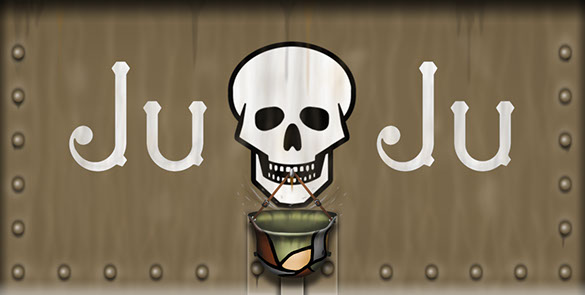
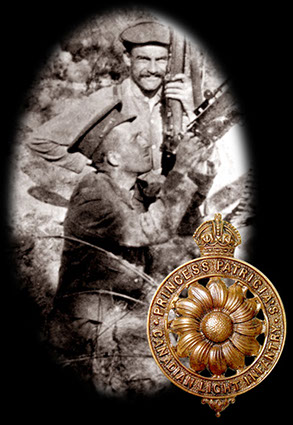
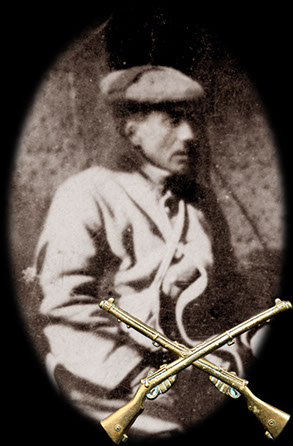
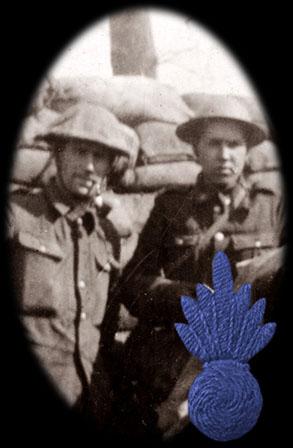
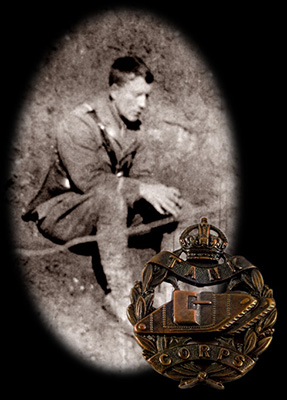
James McGuire (in foreground) behind his Vickers machine gun in August 1915 (original image from New York State Archives).
James McGuire in the attic of a wrecked house near Mount Kemmel in 1916 (original image from New York State Archives).
James McGuire (on left) while attached to a trench mortar battery, May 1916 (original image from New York State Archives).
Lt McGuire, photographed in April 1918 (original image from New York State Archives).

This site went live on the 14th February 2015 to mark 100 years since the 1/1st Cambs went off to war.
WE WILL REMEMBER THEM
Email us: cambsregt@gmail.com
Copyright 2015, 2016, 2017, 2018, 2019 by Felix Jackson. The information and images on this site should not be reproduced without prior permission.